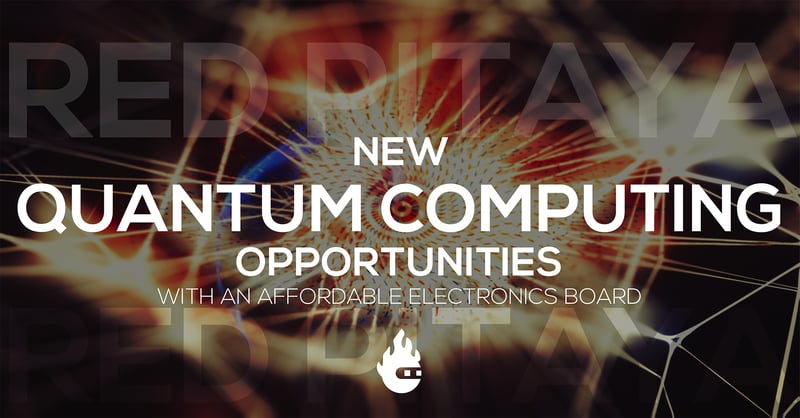Red Pitaya opens new opportunities for quantum computing
The idea of quantum computing has been developing for a few decades and has presented a completely new and revolutionary approach to computing. Information will be stored and accessed by quantum instead of classical systems and the biggest resource will be the scaling of these building blocks when combining them to a bigger system. Some challenges still arise, despite decades of research and the biggest one is finding a reliable system to implement qubits.
Red Pitaya's all-in-one board provides a suitable platform for controllers enabling quantum optics experiments. Its hardware is controlled by an FPGA and contains two 14-bit analog-to-digital converters (ADCs) with 125 MSamples/s for analog data acquisition, and two 14-bit DACs with 125 MSamples/s as analog outputs. 14 bits allow a precision of 1/16384 which should enable intensity stabilization with relative fluctuations.
Many companies, research institutes and universities have used Red Pitaya in their research projects and below we are sharing just a few examples.
Are you planning a project with Red Pitaya? Share it with us, we'd love to hear more!

Links to case studies - Trapped Ions
Using trapped ions to create qubits has shown to be a promising approach in the last decades. As light pulses in trapped ion experiments are on the order of 10μs, the high sampling rate of the Red Pitaya allows fast data acquisition which enables the stabilization of the pulse area of individual light pulses. They are easily controllable and have reasonably long coherence times, such that good experimental control can be achieved using relatively cheap electronics. Below you can find some examples of using Red Pitaya's board for trapped ions experiments.
- Improving the coherent quantum control of trapped ion qubits
- Towards Cryogenic Scalable Quantum Computing with Trapped Ions
- Improving Quantum Gate Fidelity Using Laser Intensity Based Post-Selection
- A Be+ Ion Trap for H2+ Spectroscopy
- NQontrol: An open-source platform for digital control-loops in quantum-optical experiments
Links to case studies - Lasers/Photonics
In quite a few cases Red Pitaya has been used in laser or photonics experiments, taking advantage of the open source platform which allows for your own applications to be developed.
- Red Pitaya controlled Tuneable Semiconductor Laser
- High-frequency broadband laser phase noise cancellation using a delay line
- Digital laser frequency and intensity stabilization based on the STEMlab platform (originally Red Pitaya)
- Passive Coherent Discriminator Using Phase Diversity for the Measurement of CW Laser Frequency Noise
- PyRPL (Python Red Pitaya Lockbox) - an open-source software package for FPGA-controlled quantum optics experiments
Would you like to be a part of our Red Pitaya community and receive all relevant updates?
We will only send you case studies and news, and we promise not to spam you :)
